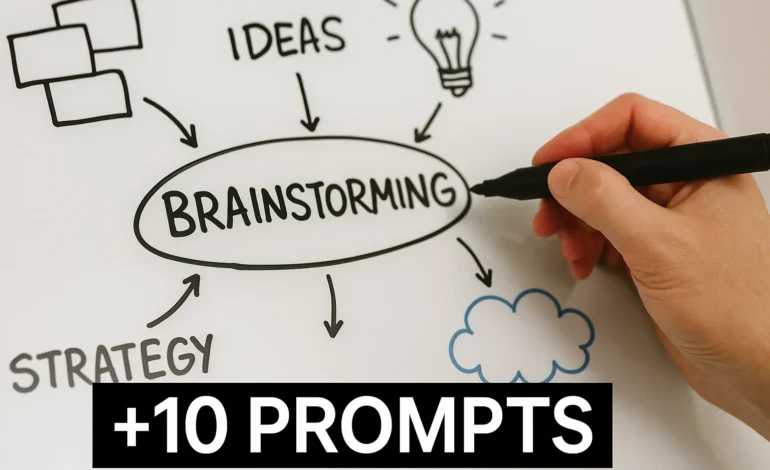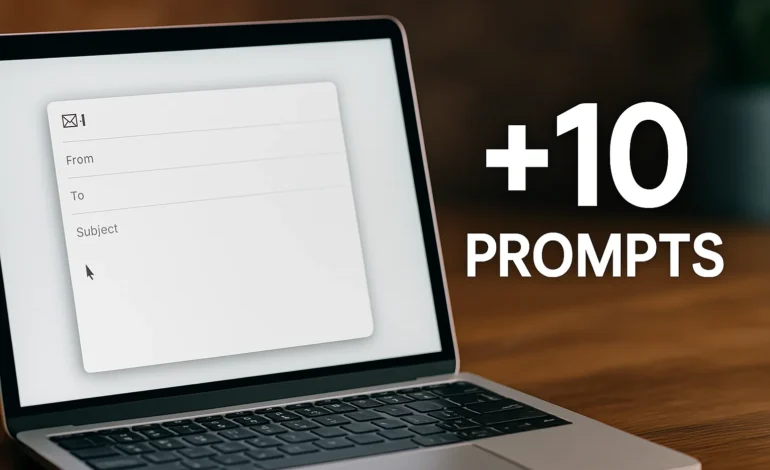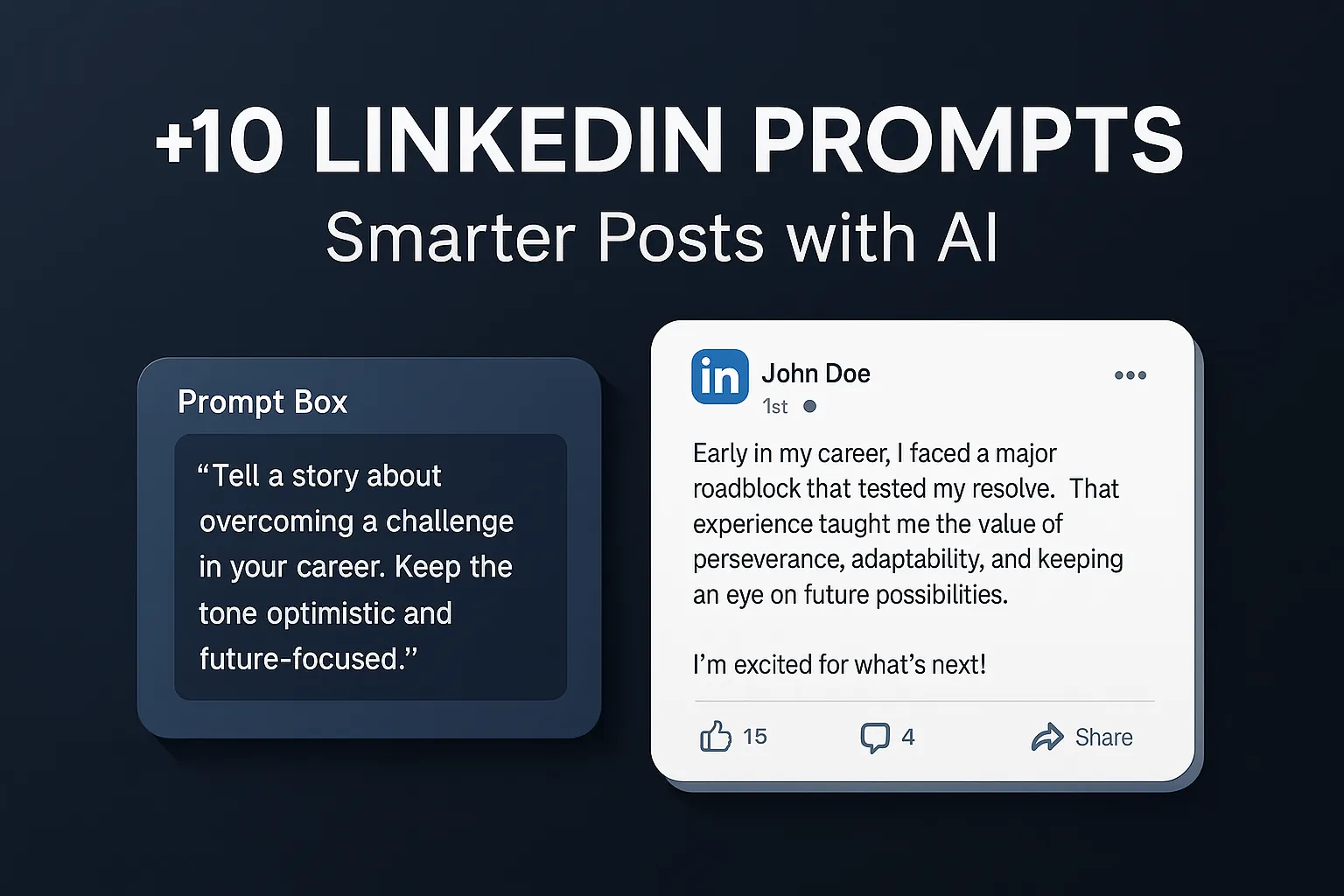
+12 Prompts to Plan Your Week Like a Pro
Great weeks don’t just happen—they’re planned. Whether you’re juggling meetings, managing deadlines, or just trying to stay sane, a smart plan makes all the difference. AI can help you set priorities, schedule better, and stay focused—if you give it the right prompts.
This guide gives you 10 real-world prompts that help you plan with clarity. Each one targets a different use case: from setting your top goals to reviewing your week with intention. Just copy, adjust, and drop into your favorite AI tool. Bonus tip: Add your current task list or calendar snippet for better results.
🔍 Jump to a Use Case
- 1. Define weekly goals
- 2. Plan with constraints
- 3. Prioritize by energy levels
- 4. Generate a time-blocked calendar
- 5. Plan a themed workweek
- 6. Create a weekly kickoff message
- 7. Plan focus blocks around distractions
- 8. Identify and preempt time wasters
- 9. Build a weekly reset ritual
- 10. Convert a long list into a weekly flow
- 11. Sync work and personal life
- 12. Create a one-page weekly planner
1. Define Weekly Goals
Starting with goals sets intention and prevents scattered effort. Great for Sunday or Monday morning planning.
Help me plan my week by defining 3–5 realistic, high-impact goals based on my general priorities: [insert priorities or projects here]. Keep the goals clear, outcome-focused, and spread across different areas (work, personal, admin).
2. Plan with Constraints
This prompt helps you make peace with your calendar instead of fighting it. Especially helpful for people with limited availability.
Create a realistic weekly plan given these time constraints: [insert days/hours blocked]. Prioritize important tasks first, then fit in smaller ones. Include breaks and buffer time.
3. Prioritize Based on Energy Levels
This is a game-changer if you often feel productive at the wrong time. Let your biology guide your to-do list.
Plan my week based on my energy levels: high in the morning, medium after lunch, and low in late afternoon. Assign tasks accordingly—deep work in high energy, admin in low energy blocks.
4. Generate a Time-Blocked Calendar
Ideal for turning big lists into calm, visual structure. Especially good for focus-driven planners.
Take this list of tasks and turn it into a time-blocked weekly schedule. Assign estimated durations and group similar tasks together. Make sure there’s buffer time and breaks.
5. Plan a Themed Workweek
Useful if you juggle lots of different task types or context switches—themes help reduce friction.
Help me theme my workweek so that each day has a focus. For example: Monday = Planning/Admin, Tuesday = Creative work, Wednesday = Meetings, etc. Suggest a layout based on common work rhythms.
6. Create a Weekly Kickoff Message
Helps start the week with intention and energy. Great for solo workers or team leads.
Write a short, motivating Monday kickoff message for myself (or my team). Mention the big goals for the week, what I’m excited about, and a reminder to stay focused. Keep it warm and clear.
7. Plan Focus Blocks Around Distractions
Perfect for open offices, WFH with kids, or notification overload. Plans around real-world noise.
I work in a distracting environment. Help me plan 3–4 deep work sessions this week and suggest how I can protect that time (location, notification blocks, etc.). Keep the advice realistic.
8. Identify and Preempt Time Wasters
Sometimes planning means removing—not adding. This prompt brings more awareness to your patterns.
Analyze my past few weeks and help me identify the biggest time wasters (e.g. meetings, over-preparation, distractions). Suggest 2–3 ways to reduce or eliminate them this week.
9. Build a Weekly Reset Ritual
Strong weeks end well. This helps you reflect without overthinking and sets a clean slate.
Help me design a short weekly reset ritual. Include a review of what I accomplished, what didn’t go well, and how I can improve next week. Keep it focused and uplifting.
10. Convert a Long List into a Weekly Flow
Especially useful if your week starts with overwhelm. This prompt brings structure and sanity.
Take this long list of tasks and organize it into a balanced weekly plan. Group tasks, assign priorities, and map them across the week. Ensure there's breathing space.
11. Sync Work and Personal Life Without Overload
Because work doesn’t happen in a vacuum—this prompt helps you integrate, not just optimize.
Help me combine my personal and professional to-dos into one weekly plan. Flag any overload. Suggest how to sequence work and life tasks so I don’t burn out. Focus on balance, not just output.
12. Create a One-Page Weekly Planner
Ideal if you like to keep a physical overview or just want to start Monday feeling fully prepared.
Based on these weekly goals, meetings, and habits, generate a one-page weekly planner I can print or save. Group by day, include key time blocks, reminders, and top goals. Format it for clarity.
In a Nutshell
Planning your week doesn’t have to be rigid—it has to be intentional. These 10 prompts help you shift from reacting to leading. Use one, use them all, or build a library that works for you. Great weeks start with clarity—and AI can help you get there.














